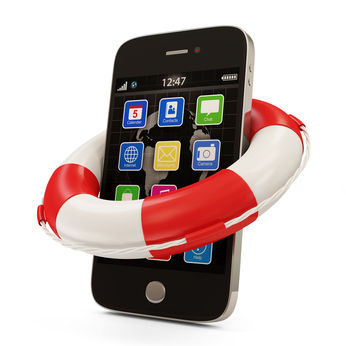
The uses for SMS continue to evolve, and now include educating the public about health insurance options. Text messaging was used to drive enrollment during the launch of last year’s Affordable Care Act (“ACA”), and proved an effective means of helping uninsured populations learn more about the program. At the time of the signup, over 48 million non-elderly American citizens were uninsured. Out of those, more than 70% had gone without health insurance for over a year, with nine out of 10 uninsured people from low or moderate income families. Additionally, one-third of Hispanic and one-fifth of black Americans were uninsured.
The Wall Street Journal noted in the months leading to the signup deadline that “...millions of Americans will suddenly be able to log on to a website and choose their own health-care coverage from a menu of subsidized options for prices and coverage levels.”
However, the reality of this mass signup included a lot of confusing paperwork and conflicting options.
Issues with ACA went beyond people simply not knowing what it was; citizens also didn’t understand it or have any idea how to use it. It was therefore essential that government agencies, non-profit organizations and health centers educated the public about their new healthcare options so both the system and the American people could benefit.
This need for healthcare education and enrollment resulted in the use of SMS text messaging. Texting is one of the easiest and most efficient ways to reach “everyone” regardless of income level, as more than 90% of American adults own and use a mobile phone. Some 326 million American mobile subscribers send over 6 billion messages per day.
The group who sends a disproportionate number of those texts? At-risk populations with the greatest need for health insurance. Households who make less than $30,000 a year, many of which are uninsured, text twice as much as households who make $75,000 or more. Texting therefore provided a reliable way to reach those populations, as they may not have access to other types of digital communications. Those with disabilities, non-English speakers and people living on or below the poverty line usually do not have working web connections.
Sending health insurance information in an easily-digestible manner via text works in three ways: 1) Outreach, 2) Education and 3) Enrollment. First, people sign up through SMS to learn more about health insurance, with signup information also placed on flyers, in brochures and on social media. Next, subscribers receive text messages about health insurance options, which are customized based on brand and target population. Finally, subscribers receive alerts about enrollment dates and deadlines.
Since at-risk populations often prove difficult to reach, texting was an easy, cost-effective solution. Now, if only the new healthcare system itself were as easy and clear as SMS.